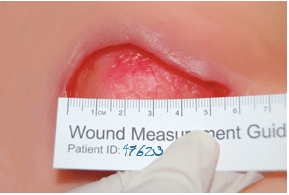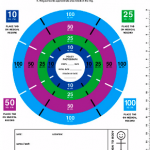
Wound Measurement
Wound Measurement and Documentation is a daily task the wound care professionals utilize in their practice. There are various tools like flow sheets, tracing materials, measuring tapes, skin markers, labels, and other products specifically designed for wound assessment, measurement and documentation.
There are varying types of documentation methods from print to electronic, digital photography to tracing. For example, tracings are used to measure the surface of a wound and provide a clear, visual picture of how a wound appears without the use of a camera. Some institutions prefer not to photography and tracing or measurement based documentation is preferred. Some Departments of Health require film based photography only and others are more accepting of Digital Photography.

Wound measurement tools are used to determine length, width, and depth. They are available in a wide variety of materials, including plastics, paper, or soft film and as single-patient use or reusable.
The use of wound measuring tools help documentation to be consistent and more exact in measuring the status of a wound as to whether it is progressing or regressing or remaining static. There is no question that documentation is a necessity. The more accurately we document, the better we can convey the understanding of what we are trying to relay to other health care professionals and readers of the patient’s chart.
So what kinds of measuring and documentation tools do you use in your wound care setting?
The Wound Care Education Institute will teach you how to accurately measure wounds in their Skin and Wound Management Course. Check out our list of dates and locations for more information about becoming Wound Care Certified
What do you think?


